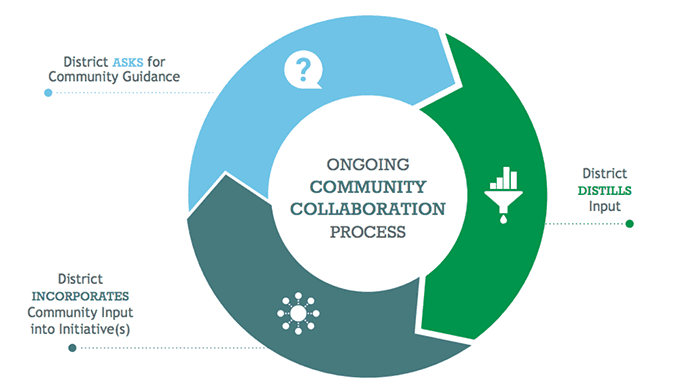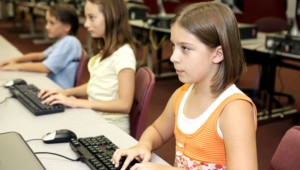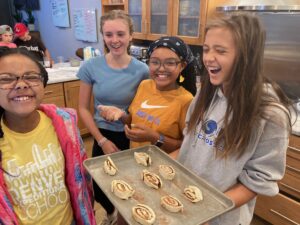Making the Shift from Community Engagement to Community Collaboration

Over time, community engagement has largely become a one-way mechanism for districts to push out information about initiatives and programs into the local community. Along the way, a small but widening gap has formed, separating the community from the school, often to the detriment of students and innovation. As the question of preparing students for independent adult life becomes increasingly complex, and the benchmark less static, the development of new education models like blended and competency-based learning stand to benefit from empowered people, networks, and more open innovation.
Leaders like Colorado’s District 51 Superintendent Steve Schultz are helping to pilot a new way of working with the community that embraces collaboration in an effort to shift the tide. “We believe the current education system, built on the industrial model, is obsolete and needs to be reinvented,” said Schultz. “So we have been trying to work with our community to understand ‘what does that look like, and what does that mean?’”
Colorado District 51, along with Archuleta #50 JT school district, are featured in the new Community Collaboration for School Innovation toolkit developed by The Colorado Department of Education, The Colorado Education Initiative, and The Learning Accelerator.
The model aspires to bring a wide variety of community stakeholders to the table in order to challenge old notions of perceived expertise, and reshape education change processes and the ways districts and communities operate. The shift from traditional community engagement towards active community collaboration occurs in four stages:
Stage 1: Create a Forum for Community Collaboration
A district should reach out across diverse community stakeholders, and create a forum where community members have time to consider and discuss an issue or issues in depth before they are asked to come to a considered view.
- What do graduates need in the 21st century to be successful?
- How do we ensure that all students are being well served?
- What could learning environments look like to ensure that students are prepared for the world once they graduate?
This baseline of input will help districts prioritize goals, consider innovations, and rethink planned initiatives through the lens of community values—some might say the jobs-to-be-done by the district for the benefit of the community. A clear task, purpose, and thoughtful facilitation is key.
Stage 2: Act on Community Directive
Innovation must be built on the foundation of community values and priorities. Once the community has given the directive for which priorities they want to see reflected in district policies and initiatives, it is imperative that district use this information with purpose to inform all work that is currently happening in the district, as well as all planned work in the pipeline. The community posits values, and in response, the district reimagines and redesigns its learning environments to ensure student success.
Stage 3: Report Progress
The districts is tasked with coming back to
the community to share how they have interpreted the community directive in terms of innovation. Once initiatives have begun to take shape, the district should establish multiple touch points on the collaboration continuum to ensure that what has been imagined—and is now being implemented–aligns with community directive.

Stage 4: Continuous Collaboration
The process of maintaining collaboration with the community is ongoing. When fully implemented, the “push” model of community engagement should be completely eliminated and every interaction with the community should be treated as an opportunity to “pull” in community guidance.
Knowledge about the kinds of things students need to know and be able to do in order to succeed in their postsecondary endeavors isn’t the exclusive domain of K-12 education, and we have a lot to learn from stakeholders in our community about how to best prepare young people for life after they’ve earned their high school diploma. This is especially important as more learning is happening beyond the school day and outside the classroom walls. Students and innovation benefit from the wisdom, experiences, and perspectives of their entire community, not just the school community.
Like any major change, the shift to community collaboration will not be without challenges, but realizing this model and the positive impact it can have on the district, community and student learning is paramount.
For more, check out:
Christina Jean is the Director of Choice and Innovation at the Colorado Department of Education. Follow Christina on twitter @christinajeanmc.
Lisa Duty is a Partner at The Learning Accelerator and an advisor to the global education sector. Follow Lisa on Twitter @LisaDuty1.
Stay in-the-know with all things EdTech and innovations in learning by signing up to receive the weekly Smart Update.






0 Comments
Leave a Comment
Your email address will not be published. All fields are required.